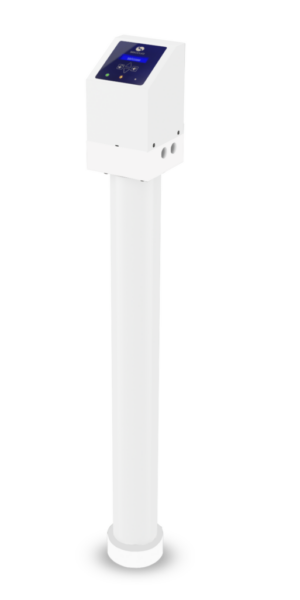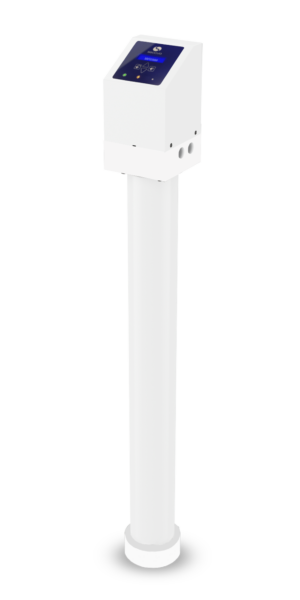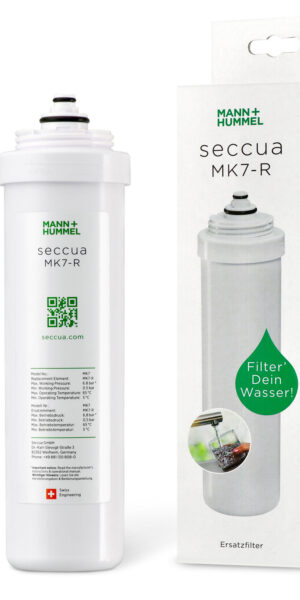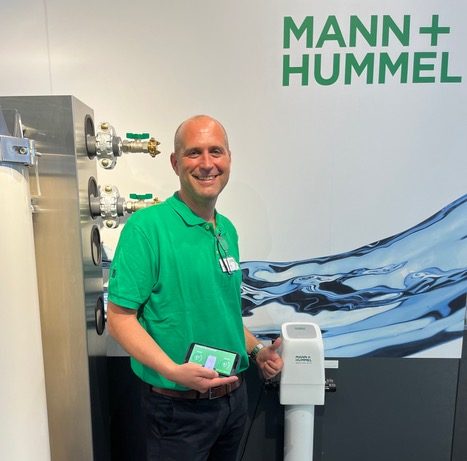
Greetings from Aquatech in Amsterdam! With over 800 exhibitors and more than 20,000 visitors, Aquatech is the world’s leading trade fair for process, drinking and waste water.

PFAS are industrially manufactured chemicals that have water, dirt, and grease repellent properties and can withstand different temperatures. PFAS is the abbreviation for “per- and polyfluoroalkyl substances.” These chemical compounds impart useful properties to industrial or consumer products (such as paints, packaging, performance clothing, cosmetics, etc.), making them water, grease, and stain repellent. However, many PFAS are considered nearly indestructible, and they accumulate in the environment and in the human body.
According to the European Environment Agency, it is considered very likely that PFAS are harmful to health and cause various types of cancer, damage the thyroid gland, increase cholesterol levels and cause developmental disorders in children in the womb.
PFAS can pose a health risk to children and the elderly, as well as to people exposed to high levels of PFAS. Similar to microplastics, PFAS are found everywhere, detectable now in the blood of most people, in breast milk, and also in drinking water.
In and outside the EU, PFAS have been detected in air, soil, factory sites, airports, military bases and the environment. As some PFAS are water-soluble, they also enter surface and groundwater and thus drinking water. The new EU Drinking Water Directive (TWRL (EU) 2020/2184) has tightened the limits for PFAS in drinking water. However, it will be a few years before the requirements are implemented in national law.
Sources:
https://www.eea.europa.eu/publications/emerging-chemical-risks-in-europe/emerging-chemical-risks-in-europe
https://www.tagesschau.de/wissen/technologie/pfas-bundesrat-grenzwerte-trinkwasser-101.html
Activated carbon binds dissolved chemical substances. A drinking water treatment system directly where the main water line enters your home (Point-of-Entry) reduces the risk of PFAS contamination of drinking water. A quick solution is also a filter installed at the point of use, for example under the kitchen sink.
Activated carbon granules made from coconut shells bind not only PFAS, but also many other dissolved pollutants (chlorine, pesticides, drug residues, etc.). The pollutants accumulate on the surface of the activated carbon granules (adsorption). Due to countless channel-shaped cavities, activated carbon has an exceptionally large surface area and thus an enormous capacity to retain pollutants. This also reduces the unpleasant taste and odor of drinking water, while retaining valuable minerals and salts.

Seccua Ultrafiltration plant with BioFilter for private households
TO PRODUCT
Seccua Ultrafiltration system with BioFilter, also reduces limescale deposits; for private households
TO PRODUCT
The compact water filtration system for clean and safe drinking water straight from the tap
TO PRODUCT
Greetings from Aquatech in Amsterdam! With over 800 exhibitors and more than 20,000 visitors, Aquatech is the world’s leading trade fair for process, drinking and waste water.

Bacterial contamination of drinking water with Pseudomonas aeruginosa, which can cause wound and urinary tract infections, pneumonia and blood poisoning in immunocompromised persons, was recently detected in the University Hospital Frankfurt.

Have you ever had an unsafe feeling about water hygiene when showering at your holiday destination? With the start of this year’s holiday season, the risk of getting infected with legionella when showering in hotels, AirBnB and holiday flats as well as on campsites is increasing.
We are here to assist you! Feel free to contact us for a non-binding consultation by phone or send us an email.
MANN+HUMMEL Water & Fluid Solutions GmbH
Kasteler Straße 45
65203 Wiesbaden, Germany
Phone: +49 611 7118 7480